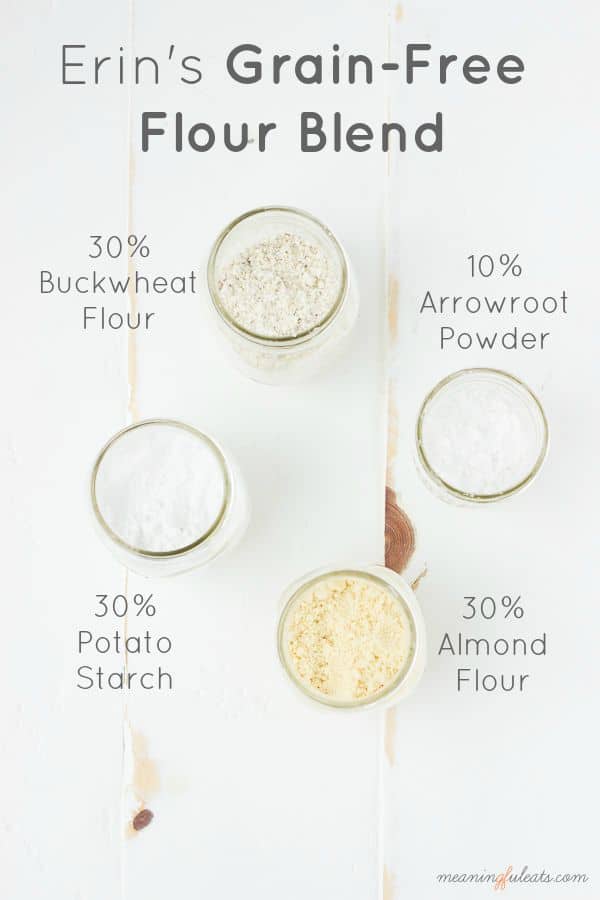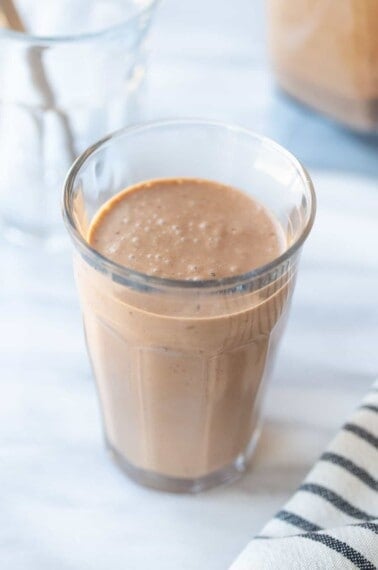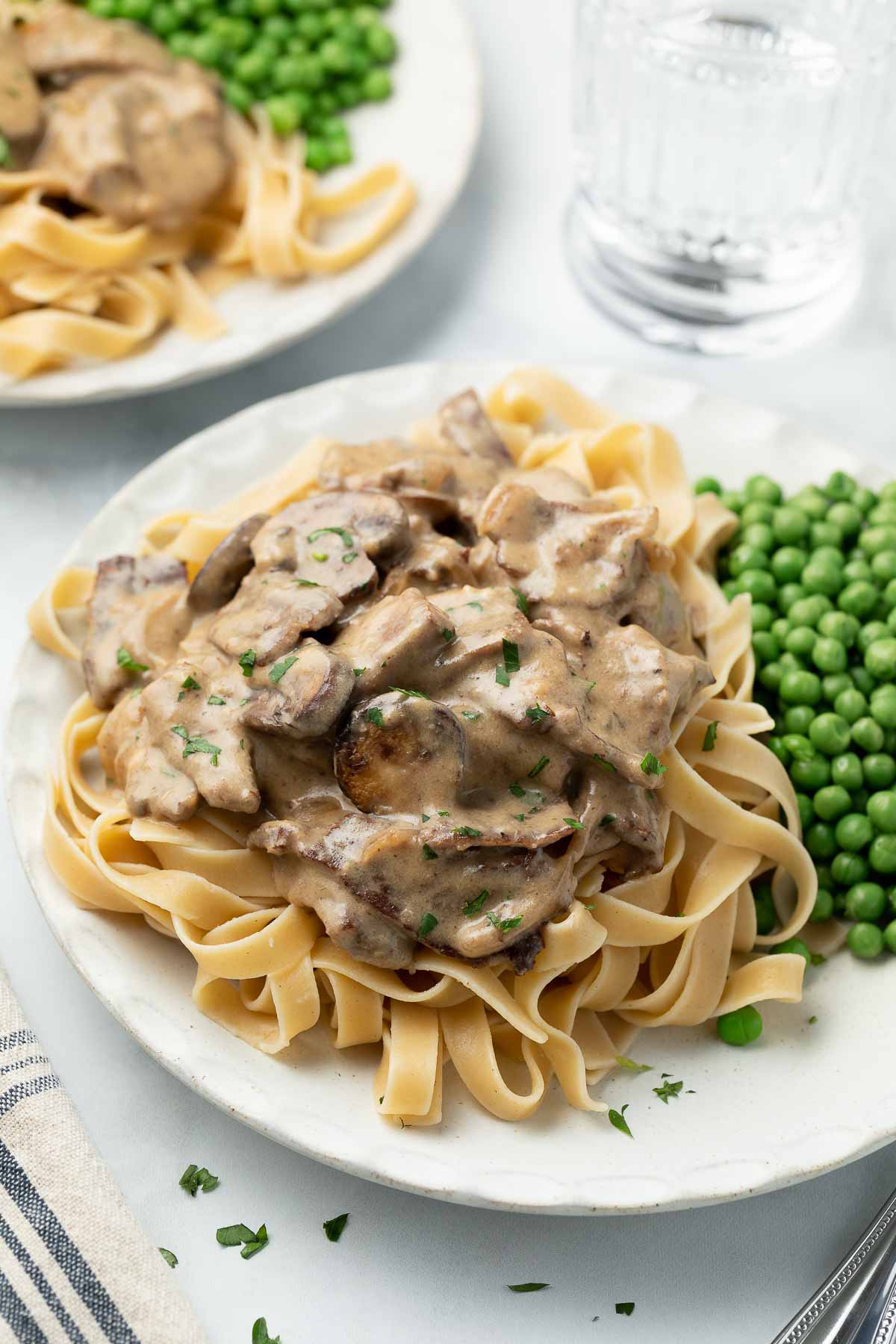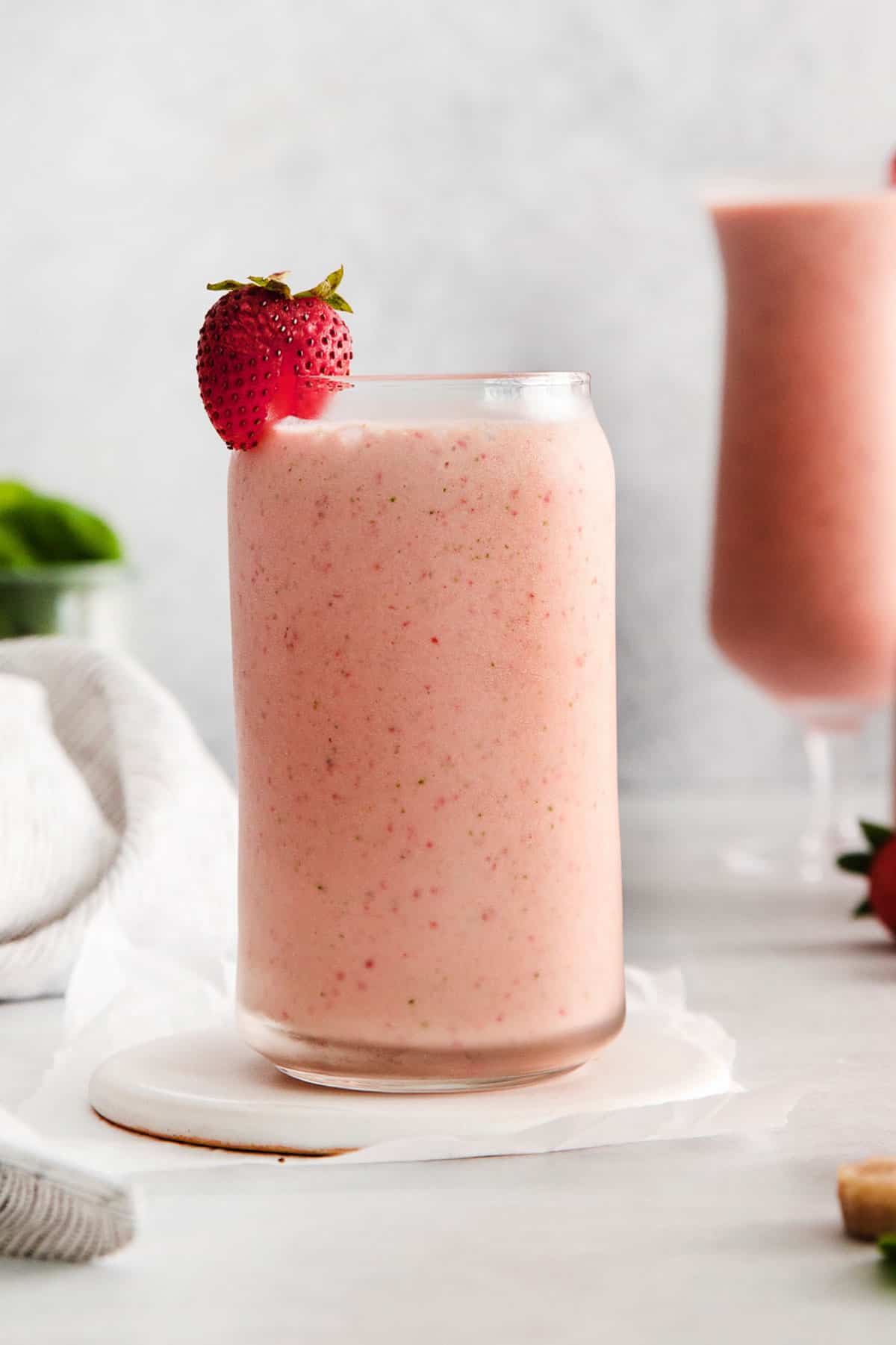 If you’re looking for an amazing gluten-free flour blend, look no further! Over the past few years I’ve experimented with a variety of different gluten-free flour combinations. I’ve been using this blend and I’ve been really happy with the results. I use this flour in place of all-purpose flour in muffins, cakes, quick breads, and cookies and it works beautifully. This blend creates the texture in baked goods I remember and miss from gluten-filled baked goods. This blend is also grain-free and much more nutritious than many gluten-free rice flour/starch blends you’ll find in the store. It also has a nice, non-chalky flavor. Buckwheat, potato starch, and arrowroot powder have natural elastic properties, so I’ve found I often don’t need to use binders like xanthan gum when using this blend. Here are the flours I use and why I use them. I’ve also linked back to my favorite brands on Amazon. Happy Baking!
If you’re looking for an amazing gluten-free flour blend, look no further! Over the past few years I’ve experimented with a variety of different gluten-free flour combinations. I’ve been using this blend and I’ve been really happy with the results. I use this flour in place of all-purpose flour in muffins, cakes, quick breads, and cookies and it works beautifully. This blend creates the texture in baked goods I remember and miss from gluten-filled baked goods. This blend is also grain-free and much more nutritious than many gluten-free rice flour/starch blends you’ll find in the store. It also has a nice, non-chalky flavor. Buckwheat, potato starch, and arrowroot powder have natural elastic properties, so I’ve found I often don’t need to use binders like xanthan gum when using this blend. Here are the flours I use and why I use them. I’ve also linked back to my favorite brands on Amazon. Happy Baking!
Buckwheat Flour – Buckwheat flour is a magical gluten-free ingredient! Despite it’s name, it doesn’t actually contain wheat. Buckwheat is a low-glycemic psuedo-grain that is full of protein, fiber, and minerals. In addition, it gives gluten-free baked goods great structure and stability. It has natural elastic properties and using it in this flour blend usually eliminates the need to use additional gums and binders. I like to make my own buckwheat flour from raw buckwheat groats (not toasted buckwheat, which is called kasha). To make the flour, simply grind up the buckwheat groats in your high-speed blender into a fine flour. Buckwheat flour sold in bags at the store often has a strong and overpowering flavor, which is another reason I prefer to make the fresh flour. Even fresh, buckwheat flour does have a distinct flavor. I like using it in combination with the following flours so the flavor isn’t overpowering. Be sure to blend the flour very well so it is finely ground.
Almond Flour – Almond flour is everyone’s favorite gluten-free flour for a reason. It adds nice flavor and moisture to gluten-free baked goods. It also ups the protein and fat content in gluten-free baked goods imparting richness and browning. Be sure to buy blanched almond flour instead of almond meal. Blanched almond flour is simply almond flour where the nuts have their skins removed before they are ground into a fine flour. Blanched almond flour creates light and fluffy baked goods. I like the brands Honeyville or Digestive Wellness. I DO NOT recommend Bob’s Red Mill’s almond flour. I love Bob’s Red Mill for other products, but their almond flour is gritty.
Potato Starch – Potato starch (not to be confused with potato flour) gives baked goods wonderful tenderness and structure. It makes cakes and quick breads light.
Arrowroot Powder – Arrowroot powder is another starch that gives baked goods a light crumb and texture. Arrowroot powder also has elastic properties that help bind gluten-free baked goods, resulting in non-crumbly treats.
Erin’s Grain-Free Flour Blend
By Weight:
- 300 grams buckwheat flour (ground finely in the blender from raw buckwheat groats)
- 300 grams blanched almond flour
- 300 grams potato starch
- 100 grams arrowroot powder
By Cups:
- 2 1/4 cups buckwheat flour (ground finely in the blender from raw buckwheat groats)
- 2 1/2 cups blanched almond flour
- 1 3/4 cups + 1 tablespoon potato starch
- 3/4 cup arrowroot powder
Mix together all the ingredients. Sift together using a large wire whisk to really incorporate all of the flours. Store in an airtight container.
*If you have a kitchen scale I highly recommend measuring the ingredients out by weight. This is much more accurate. Weighing by cup tends to vary based on how people scoop out ingredients. If you are measuring by cup, scoop the ingredients lightly and level them off rather than pouring the flours into the measuring cup.
For a great nut-free flour blend try Gluten-Free Flour from This Vivacious Life.
You also might like these articles on how to make oat flour and substitute for oat flour.















Hi Erin,
Thank you for sharing your flour blend recipe.
This flour blend is fantastic. Not only it is nutritious, but bakings turned out more flavourful and moist. It worked with your sandwich bread recipe, too.
I’m so glad you like the flour blend! I love it in my sandwich bread recipe too 🙂
Thank you for a great blend!!! We have made many delicious pastries with this flour blend. We find that it works well for pastries with 2/3s of this flour blend, and 1/3 of almond flour + 2 tsp of psyllium husk per cup of flour in the recipe.
Do you have a ground buckwheat flour that you recommend? I bought the groats but I find that it’s difficult to blend the groats into an ultra-fine flour. I tried the Arrowhead Mills flour and it’s more whole grain than the ground groats.
I buy Anthony’s Organic Buckwheat flour, available on Amazon. It makes great baked goods!
Hi Erin ,
I did not see my comment come through so I just wanted to ask if this flour mixture will raise my sugar. I can’t have splet flour or wheat and wondering if Buckwheat is Gluten Free? Thanks I just love your site.
Laurie
Yes buckwheat is gluten-free free!
Hi Erin. Can I also substitue tapioca flour or cornstarch for the arrowroot powder? Will it be the same results as you mentionned for the potato starch?
Thanks,
Malia
HI Erin
I’m planning to use your blend to make pizza dough. Wondering about using xanthm gum in place of the arrow root? Or is that a different function?
Also, wondering what you think about corn flour? – I surprisingly don’t see it listed in gluten free pizza flour recipes (such as yours) – though I have come across pizzas with corn flour and I like it. If you were to say go ahead – what proportion would you suggest in your blend?
Thank you!
Hi Erin
Buckwheat Flour is not available in my country – what alternative do you suggest?
Do you have a suggestion for a replacement for potato starch? I have a nightshade allergy and potato is a big offender for me.
Hi Erin! I love your recipes. Not a bad one in the batch! I’d like to make your gluten-free flour blend, however, I have a nightshade sensitivity so I can’t use potato starch. Any recommendations on a sub? Could I just use additional arrowroot to replace the potato starch?
did you find a sub? i am in the same boat.